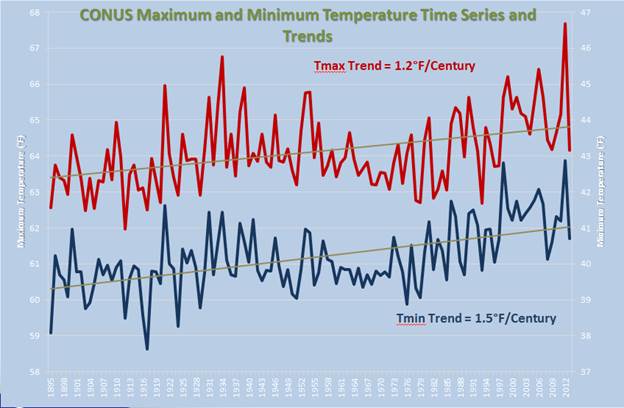- Joined
- Sep 15, 2013
- Messages
- 8,320
- Reaction score
- 4,122
- Location
- Australia
- Gender
- Male
- Political Leaning
- Liberal
The climate has been changing since the beginning. It is not changing now at a rate that will doom human life. It is changing at a roughly normal rate. We will adapt, if we can keep ourselves from the global fascist progressive rule.
From Shakun et al 2012, the last major deglaciation saw an average global rate of warming (blue) around 0.04 degrees per century:

From Marcott et al 2013, after reaching a thermal maximum around 9,000 to 5,000 years ago, the millennial trend has been cooling:

Various shorter-term paleoclimate studies offer higher resolution insights into the past thousand-plus years of climate change (from McShane and Wyner 2010, if memory serves):

If an asteroid were hurtling toward earth with deadly impact results imminent there would be no disagreement with the science of the observation. Oddly, with the supposedly deadly climate issues, the faithful and skeptic groups fall along largely conservative / progressive lines. It just screams of political agenda.
Not quite accurate. Opposition to effective curtailment of GHG emissions comes largely from those opposed to unpopular regulation on business, including for example Al Gore when he was Vice President:
https://www.theguardian.com/commentisfree/2007/dec/17/comment.world
"After 11 days of negotiations, governments have come up with a compromise deal that could even lead to emission increases. The highly compromised political deal is largely attributable to the position of the United States, which was heavily influenced by fossil fuel and automobile industry interests. The failure to reach agreement led to the talks spilling over into an all-night session."
These are extracts from a press release by Friends of the Earth. So what? Well it was published on December 11 - I mean to say, December 11 1997. The US had just put a wrecking ball through the Kyoto protocol. George Bush was innocent; he was busy executing prisoners in Texas. Its climate negotiators were led by Albert Arnold Gore.
The European Union had asked for greenhouse gas cuts of 15% by 2010. Gore's team drove them down to 5.2% by 2012. Then the Americans did something worse: they destroyed the whole agreement. Most of the other governments insisted that the cuts be made at home. But Gore demanded a series of loopholes big enough to drive a Hummer through. The rich nations, he said, should be allowed to buy their cuts from other countries. When he won, the protocol created an exuberant global market in fake emissions cuts....
"After 11 days of negotiations, governments have come up with a compromise deal that could even lead to emission increases. The highly compromised political deal is largely attributable to the position of the United States, which was heavily influenced by fossil fuel and automobile industry interests. The failure to reach agreement led to the talks spilling over into an all-night session."
These are extracts from a press release by Friends of the Earth. So what? Well it was published on December 11 - I mean to say, December 11 1997. The US had just put a wrecking ball through the Kyoto protocol. George Bush was innocent; he was busy executing prisoners in Texas. Its climate negotiators were led by Albert Arnold Gore.
The European Union had asked for greenhouse gas cuts of 15% by 2010. Gore's team drove them down to 5.2% by 2012. Then the Americans did something worse: they destroyed the whole agreement. Most of the other governments insisted that the cuts be made at home. But Gore demanded a series of loopholes big enough to drive a Hummer through. The rich nations, he said, should be allowed to buy their cuts from other countries. When he won, the protocol created an exuberant global market in fake emissions cuts....
If this were the vast international globalist agenda which some folk imagine, of all people the Clinton/Gore team should have pushed it hardest! Instead, the reality suggests that it is servitude to political donors, business interests and neoliberal economic ideology which is the main factor behind opposition to climate science.
Same thing as happened with asbestos.
Same thing as happened with tobacco.
Same thing as happened with CFCs.






